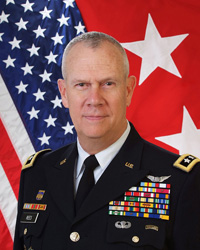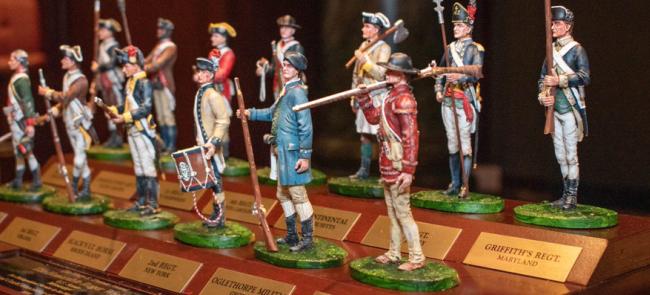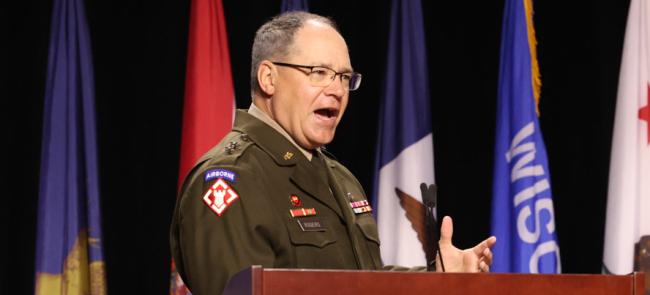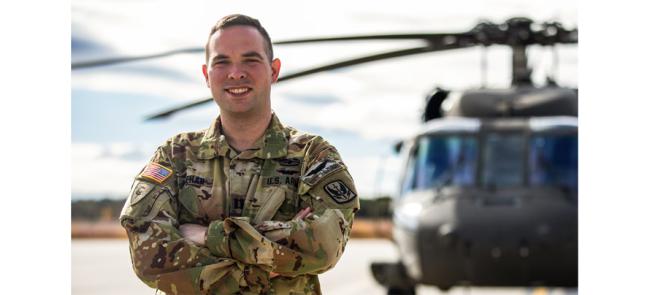
Still On Target
A landmark 1993 agreement
among the Army’s components
to refocus the Guard and Reserve
continues to serve the Army —
and the needs of the states
By Maj. Gen. Raymond "Fred" Rees (Ret.)
In 1977, I had a conversation with then-Col. Norman Schwarzkopf about the potential of the Army National Guard. He shared something that I believe was then the prevailing view across the active Army.
At the time, I was a newly assigned S-3 coordinating my Oregon Army Guard squadron’s participation in an upcoming major exercise as a subordinate unit of Schwarzkopf ’s brigade from Fort Lewis, Washington. I felt confident in the exchange, as I had commanded a cavalry troop in Vietnam and a tank company in Germany before transferring to the ARNG after seven years in the Regular Army. I had also commanded a rifle company in Oregon’s 41st Infantry Brigade.
“There were lots of good individuals in the Guard, but there were no good units,” the man who would go on to be the architect of Operation Desert Storm told me.
Today, things have changed. My conversations with senior Army leaders suggest they believe the Guard has lots of good individuals and lots of good units.
This is a product of three decades of operational deployments. Today’s senior leaders may not fully understand or appreciate our state responsibilities, but they have served with the Guard on the front lines, and they value and need what we bring to the overseas fight.
They certainly don’t see the Guard in the trite stereotypes that we dealt with 40 and 50 years ago.
The 1993 Offsite Agreement was a catalyst to changing those perceptions. Thirty years later, the unprecedented pact forged by the leaders of the Regular Army, Army Guard and Army Reserve has not only stood the test of time, but it provides the balance the Army needs to accomplish its mission “to deploy, fight and win our nation’s wars.”
Unfortunately, I don’t think the agreement is well understood by the current generation of leaders across the Army’s three components. To many, it’s just a bumper sticker.
In a nutshell, the Offsite Agreement refocused the role of the Army’s two reserve components, concentrating combat formations in the Army Guard and combat service support in the Army Reserve. Previously, these capabilities were spread across the two components.
A dozen Army, Guard and Reserve military and affiliated association leaders (see below), including NGAUS, the Adjutants General Association and the Reserve Officers Association, signed the agreement after months of meetings at locations away from the Pentagon. That’s why it’s called the Offsite Agreement.
Gen. J. H. Binford Peay III, the Army vice chief of staff, signed for the active component. Maj. Gen. John “Jack” R. D’Araujo, as director of the Army Guard, joined me, at the time the National Guard Bureau vice chief, among five people who signed for the Guard. Maj. Gen. Roger Sandler, the chief of the Army Reserve, and Brig. Gen. Thomas Kilmartin, the deputy chief, were the primary signatories for their component.
The agreement redesignated the Guard as the Army’s primary reserve for division-and-below combat and combat support formations. However, it also provided the Guard with enough combat service support units to give governors the kind of balanced force they needed to respond to a variety of domestic missions.
Meanwhile, the Army Reserve would serve as the Army’s combat service support enabler during times of war.
In this article, it is my intention to examine the Offsite Agreement as the instrument to keep the Guard as the primary combat reserve of the Army. The Army hasn’t always followed it to the letter, but the agreement’s fundamental logic is as valid today as it was in 1993.
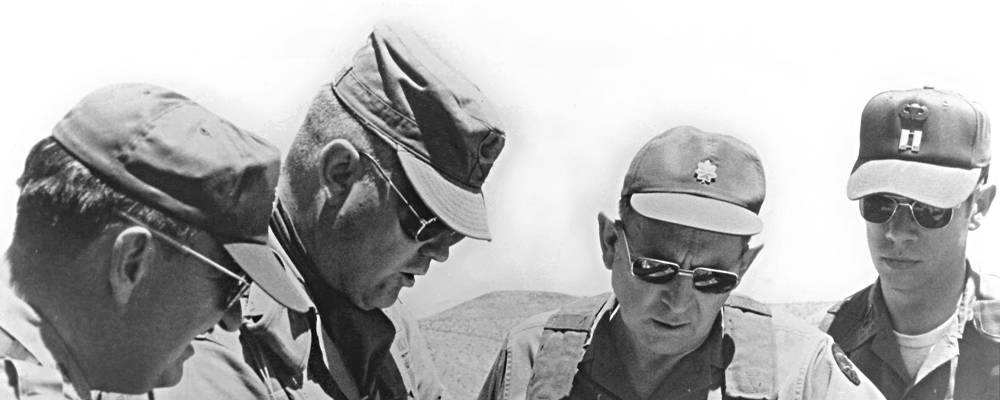
Some History
The roots of the Army Guard and the Army Reserve are a good place to begin this discussion.
The Guard has long been in the nation’s first line of defense. The militia, the forerunner of the Guard, protected the original colonies and was our forefathers’ choice to defend the fledgling nation. This role is clearly stated in the Constitution, where the militia may be called to repel invasion, suppress insurrection and execute the laws of the union.
As a militia nation came of age, the 1903 Militia Act increased federal support to the state militias, institutionalized the name National Guard and designated the force as the primary combat reserve of the Army.
The Army Reserve dates to 1908. It began as the Medical Reserve Corps. Congress created the organization to recruit and manage doctors and other medical personnel who could be mobilized in times of conflict to augment the Regular Army. It was designed as a purely federal force of individuals, not combat-capable units.
Congress in the 1920s reorganized the U.S. land forces by authorizing a Regular Army, the Guard and an Organized Reserve. The latter provided a pool of trained reserve officers and enlisted men for use as fillers in war. Army plans also included 33 Reserve divisions, existing either as paper units or in a cadre status.
The Army grew to some 11 million soldiers during World War II, and many served in formations that formally belonged to the Army Reserve. The organization emerged from the war with a force nearly as large as the Army Guard. Over four decades, the Army Reserve included infantry, artillery, aviation and Special Forces units among their troop program unit structures.
The nation also maintained its largest peacetime active-component Army in history. The large total Army was designed to deter the march of communism. The effort included basing 300,000 troops in Western Europe. The grand strategy was manpower intensive and expensive, but it worked. The Soviet Union spent itself into bankruptcy and imploded in 1989.
Following the end of the Cold War, many of us in uniform thought the world was still dangerous, but there was no direct immediate threat on the level of the former Soviet Union. There was also a great clamor at home for a “peace dividend.” Significant cuts to Army personnel strength became inevitable. The questions were how many troops and from where? On this, the three components differed fiercely, and often publicly.
Army leaders wanted to make across-the-board cuts to all three components without much consideration of their impact on the states and territories. We argued that this “salami slice” approach wouldn’t work for the Guard. The irony is the process had become a budget drill and you just don’t save much money by cutting part-time troops.
We had lot of questions: Were Army leaders going to leave us with a balanced force across the 54 states, territories and the District of Columbia? Did they realize the efficiencies that are provided at the state level? Were they going to follow the Constitution and the other authorities? Were they going to respect the history between the federal government and the states?
Army leaders also wanted to keep most of the division-and-below combat structure in the active component. Initial proposals were to reduce the Army Guard’s brigade-sized maneuver organizations from 54 to five. The idea was to maintain an active-component “rush to crush” concept if something erupted. The enablers would be in the Guard and Reserve. The Guard suddenly faced a wobbly future.
The first Persian Gulf War delayed the process and added to the friction. The active component got to showcase its thinking. Even though the Army successfully deployed many Guard and Reserve units, the service deliberately held back Guard “round-out” brigades from Georgia, Louisiana and Mississippi that were supposed to go with their active divisions.
It was painfully obvious that Army leaders didn’t want to give Guard combat formations the opportunity to perform in a real contingency. That could jeopardize their premise that only active-component combat organizations could respond quickly. The snub was a sore spot for us for many years.
Congress, which would have the final say on post-Cold War force structure, grew fed up with the acrimony. Lawmakers and Pentagon policy-makers brought them a solution that was acceptable to all three components. Fortunately, service leaders took the advice, gathering active Army, Army Guard and Army Reserve leaders in early 1993 to settle their differences.
Given the rancor, I’m not sure Congress thought we could come up with an agreement.
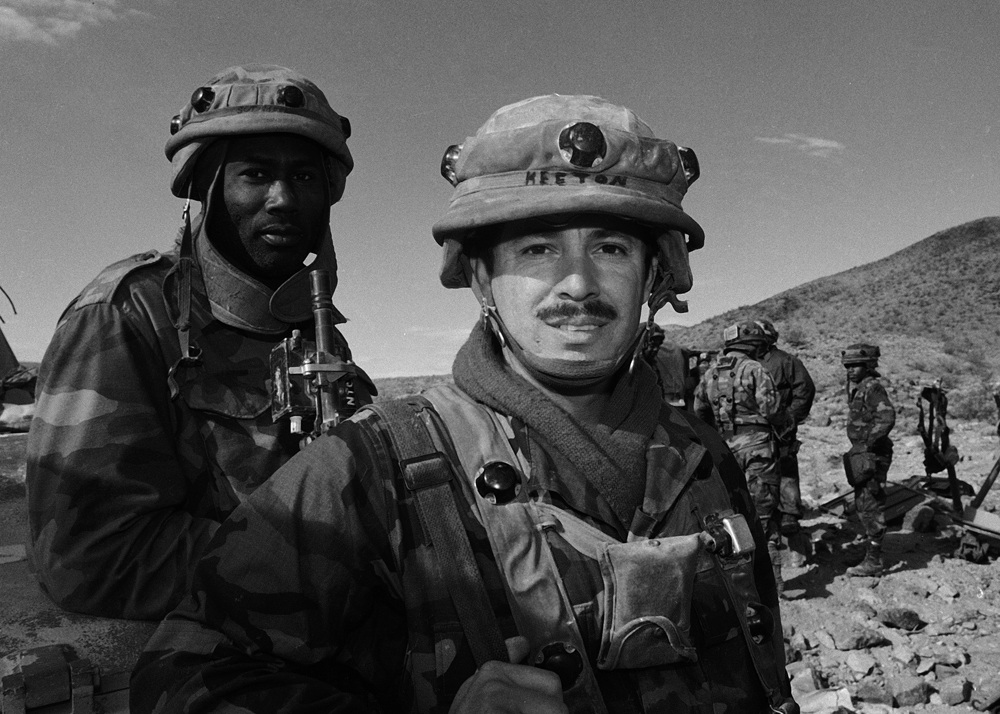
Behind Closed Doors
General D’Araujo and I first assumed Guard leadership roles at the Pentagon in the early 1990s. He became deputy director of the Army Guard in 1990 after serving as the assistant adjutant general-Army in Hawaii. I became director of the Army Guard in 1991 after four years as the adjutant general of Oregon. I moved on to become NGB vice chief in September 1992. Jack became Army Guard director in 1993.
I think we were a great team. I really enjoyed working with him. He had a tremendous understanding of how things worked in the Pentagon after many years in the Army Guard directorate and two years as the Army Guard’s deputy director. We both also had commanded Guard units at the battalion and brigade levels. As we began the Offsite process, Lt. Gen. John Conaway, the NGB chief, gave Jack and me wide latitude to represent the Guard Bureau and the ARNG.
We challenged the Army’s thinking. We believed large cuts to the Guard would squander our capabilities, our cost effectiveness and our relevance. Our ability to respond domestically would clearly suffer. We also pointed out that, for years, the allocation of force structure across the Army had been undertaken with little thought to the Constitution, history, statutes or even simple practicality.
This forced a conversation on efficiency and which reserve component provided the most to the nation for a given unit type. Often, it was in the Guard, with our federal and state missions. We clearly won that argument.
One example is the rotary-wing aircraft structure. Helicopters are essential to saving lives during natural disasters.
Time is of the essence in disaster response. Dispersement and availability to all states make the Guard the most logical component for aviation structure.
But domestic response also requires some medical, transportation, signal and military police capabilities. That’s why it was important for the Guard to have a balanced force — some combat service support along with combat and combat support formations. Those forces are inherent in combat division and brigade structures. These organic formations train together and respond together.
The group met at least once a month for several months. The meetings involved only senior leaders, no straphangers. The negotiations were tough. No component came away with everything it wanted, but we did develop a way forward that became the foundation for how the components would serve the American people in war and in peace to this day.
The agreement signed Nov. 10, 1993, stated the Army Guard would field the Army’s reserve combat forces; the Army Reserve would provide the combat service support. The change involved a “swap” of about 10,000 personnel spaces between the two reserve components. The Guard picked up armor, infantry, artillery and Special Forces positions, while the Reserve added quartermaster, medical, signal, transportation and military police slots.
In addition, nearly 5,000 aviation positions and their equipment were shifted from the Reserve to the Guard to “generally satisfy state aviation requirements.” Without the migration, 12 states would have had no Army Guard aviation for domestic operations. Minimal rotary-wing assets would remain in the Army Reserve: two CH-47 Chinook heavy-lift companies and two AH-64 Apache attack battalions.
Troop cuts during the following five years were also part of the agreement. The Guard would gradually go from 422,700 to 367,000 soldiers while the Reserve would be reduced from 275,900 to 208,000 troops. Active-component strength would be ramped down from 610,000 to 535,000 personnel.
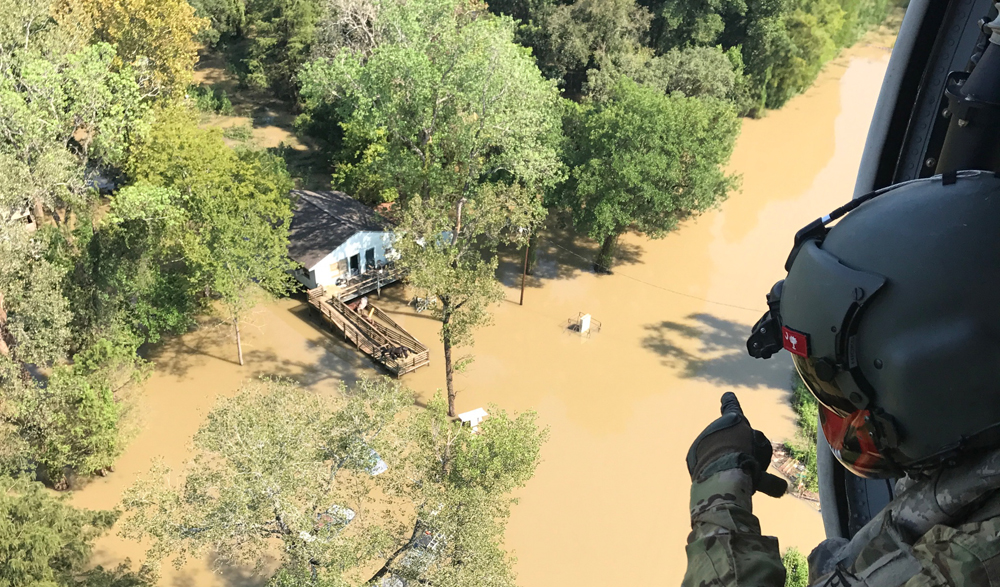
Proof of Concept
Subsequent events quickly proved the Offsite Agreement had laid the right foundation.
Not surprisingly, the Army grudgingly allowed Guard combat formations to take baby steps to prove themselves. It was kind of: Can they do it? Should we give them a chance to do it? The Guard kept saying: We can. We will. And guess what? We proved time and again, with every mission the Army gave us, we could get it done.
First, in 1995, we were able to send a Guard infantry battalion to conduct the Sinai peacekeeping mission. Then it was Bosnia.
We first were able to send a rifle company. Then a battalion. Then a brigade. Finally, a Guard division headquarters deployed to run the entire operation.
After 9/11, the operations tempo really took off. It quickly became clear that Guard combat formations were going to be needed, they were going to be used and they were used. And by the time we got into 2005, 2006 and 2007, a significant portion of the deployed Army combat formations were Guard brigades. That utilization continued through the end of major combat operations in Iraq and Afghanistan.
There should be no doubt that Guard combat units, when properly trained and equipped, are very capable and can be fully integrated into the Army’s Global Force Management program. Today, for example, Guard combat formations are providing much of the command and control in Kosovo, the Horn of Africa and the Middle East.
The Army simply cannot conduct its daily worldwide operations without Guard combat units, and Army leaders will tell you that. This is a product of the Offsite Agreement. Retired Marine Maj. Gen. Arnold L. Punaro, a long time participant in Capitol Hill and Pentagon budget and policy battles, provides a helpful crystal ball. In his book, On War and Politics: The Battlefield Inside Washington’s Beltway, the former Senate staffer and recently departed chairman of the Reserve Forces Policy Board, writes about the “incredible shrinking military,” particularly the active component.
The trend is a function of rising personnel and equipment costs, not a safer world, and it’s accelerating.
The Army is grappling with multiple questions. What will be required of the Army in the Indo-Pacific? What should the Army’s force structure look like in large scale combat operations? What are the modernization needs of the Army in the decades to come?
Informing us as these questions are asked are the events that have taken place in Ukraine during the last two years. Once you get locked down into positional warfare, it clearly demonstrates that staying power and mass are still a significant factor on the battlefield. What I think this leads to is not that the Guard is going to replace the active Army, but the role of the combat reserve of the Army is going to take on an even more significant part of the structure in the future.
Real-world events have proven the theory and the soundness of the decisions made during the 1993 Offsite. Undoubtedly, there will be budget drills and force structure changes and proposals in the future. It’s important that those involved in these discussions understand the background on why we do the things we do; and the peril of altering the course we took three decades ago.
It comes back to what I said earlier about the premise of this article, which is preserving and assuring the role of the Guard in the nation’s defense and domestic response into the future. This includes ensuring the Guard has the structure and resources to perform its Constitutional, statutory and historic roles.
We are only a dozen years away from the 400th anniversary of the militia, the National Guard, in America. We have been able to prove our worth to the country for four centuries. We must continue to do that.
Retired Maj. Gen. Raymond “Fred” Rees can be reached via [email protected].
1993 Offsite Agreement
The agreement refocused the role of the Army’s two reserve components:
● The Army National Guard would focus on wartime combat and peacetime domestic response.
● The Army Reserve would focus on combat service support during wartime. To facilitate the above, there would be a “swap” of about 10,000 personnel spaces between the two reserve components:
● The Guard picked up armor, infantry, artillery and Special Forces positions.
● The Reserve added quartermaster, medical, signal, transportation and military police slots.
In addition, nearly 5,000 aviation positions and their equipment would shift from the Reserve to the Guard to “generally satisfy state aviation requirements.”
The agreement also reduced personnel end strength to 367,000 troops in the Guard and 208,000 in the Reserve by 1999.
Below are the signatories to the Nov. 11, 1993, memorandum of record:
Gen. J. H. Binford Peay III, Vice Chief of Staff, Army
Lt. Gen. Richard L. West, Vice President, Association of the U.S. Army
Maj. Gen. Raymond F. Rees, Vice Chief, National Guard Bureau
Maj. Gen. John R. D’Araujo, Director, Army National Guard
Maj. Gen. John L. Matthews, President, NGAUS
Maj. Gen. Robert F. Ensslin Jr. (Ret.), Executive Director, NGAUS
Maj. Gen. Ansel M. Stroud, President, Adjutants General Association
Maj. Gen. Roger W. Sandler, Chief, Army Reserve
Brig. Gen. Thomas J. Kilmartin, Deputy Chief, Army Reserve
Maj. Gen. Kenneth A. Bouldin (Ret.), President, Reserve Officers Association
Maj. Gen. Evan L. Hultman (Ret.), Executive Director, Reserve Officers Association
Maj. Gen. Paul G. Rehkamp (Ret.), President, Senior Army Reserve Officers Association
ABOUT THE AUTHOR: Maj. Gen. Raymond "Fred" Rees (Ret.)
‘Underneath their nametag beats a hero’s heart’
That was the stirring tribute, written by The Devil’s Sandbox author John Bruning, that Maj. Gen. Raymond “Fred” Rees paid to the 8,500 members of the Oregon National Guard when he retired as their adjutant general in July 2013.
The same tribute is still being afforded to Rees nearly 11 years later for his half century of service to the United States.
It officially began with the Helix, Oregon, native son’s graduation and armor commission from the U.S. Military Academy at West Point, New York, in 1966. It officially ended in 2019 when he stepped down after five years as deputy assistant secretary of the Army for Training, Readiness and Mobilization.
Rees packed a lot into his distinguished career that spanned 47 years of uniformed service, 40 of them as an Oregon Army Guard officer who served at the highest levels in his state and at the National Guard Bureau.
He was a serious soldier from the start, and he took every opportunity to improve. He was a 101st Airborne Division troop commander as a junior officer during his year in Vietnam. He endured Airborne and Ranger schools and jungle warfare training. He underwent Aviation and Armor schools. He earned a law degree from the University of Oregon and attended the Army War College.
Beginning in May 1987, Rees served as Oregon’s adjutant general three times; he was the Army Guard’s director, the Guard Bureau’s vice chief two times and acting chief twice; he was also chief of staff of the U.S. Northern Command and North American Aerospace Command.
Orchestrating a State Partnership Program affiliation with Oregon between Vietnam in 2012, during his final tenure as adjutant general, was among his most satisfying accomplishments. It’s one more reason why Rees is so highly regarded for his “hero’s heart.”
— By Bob Haskell
